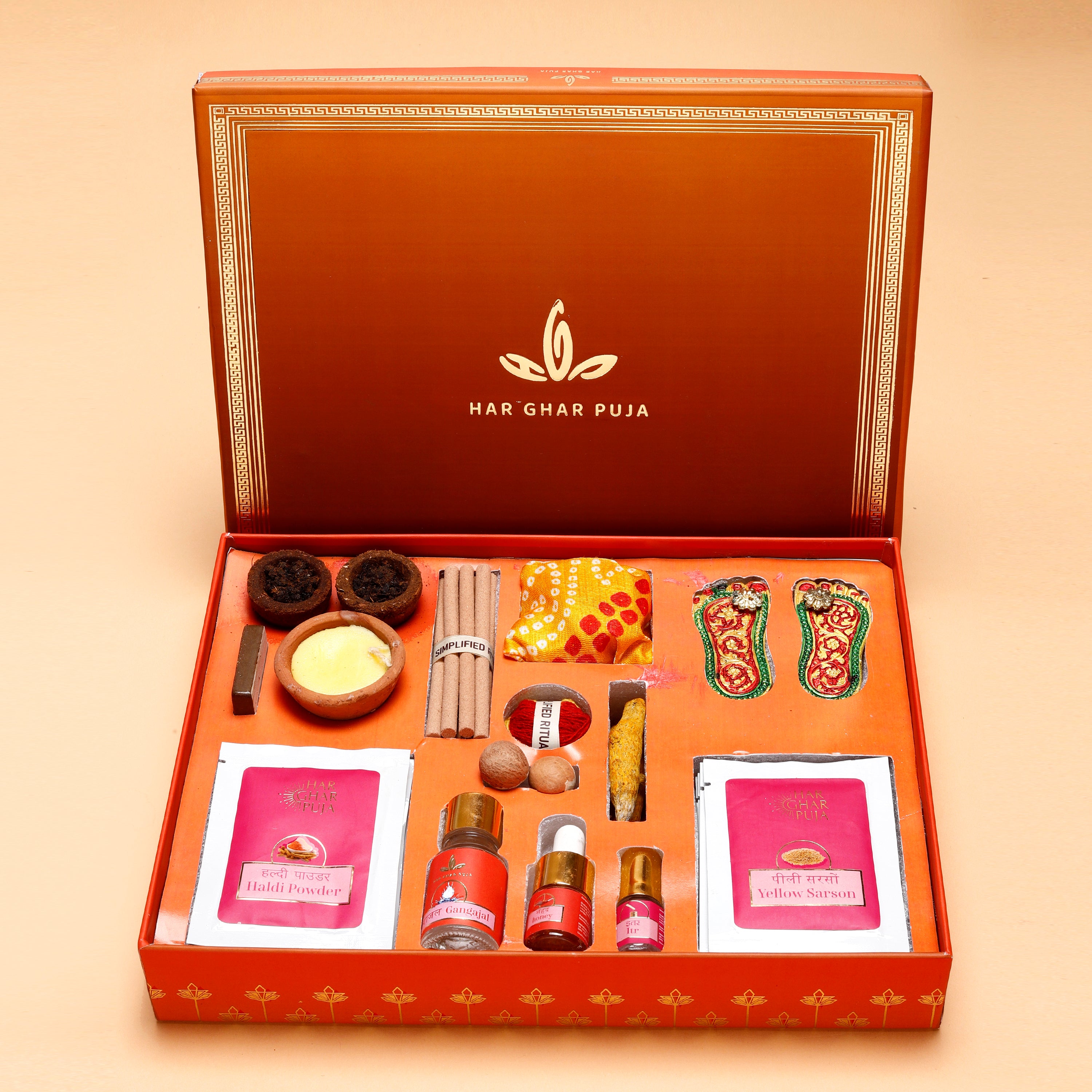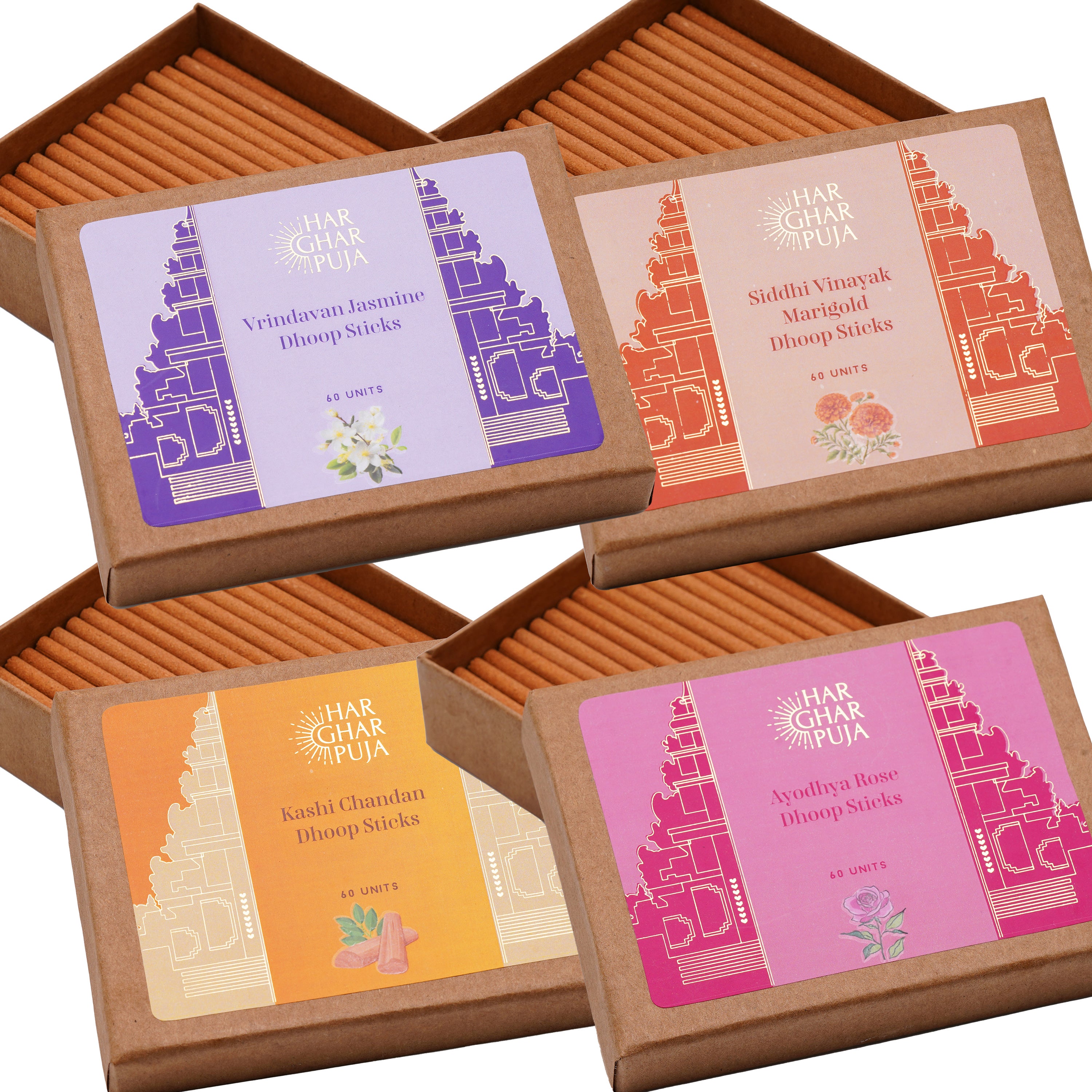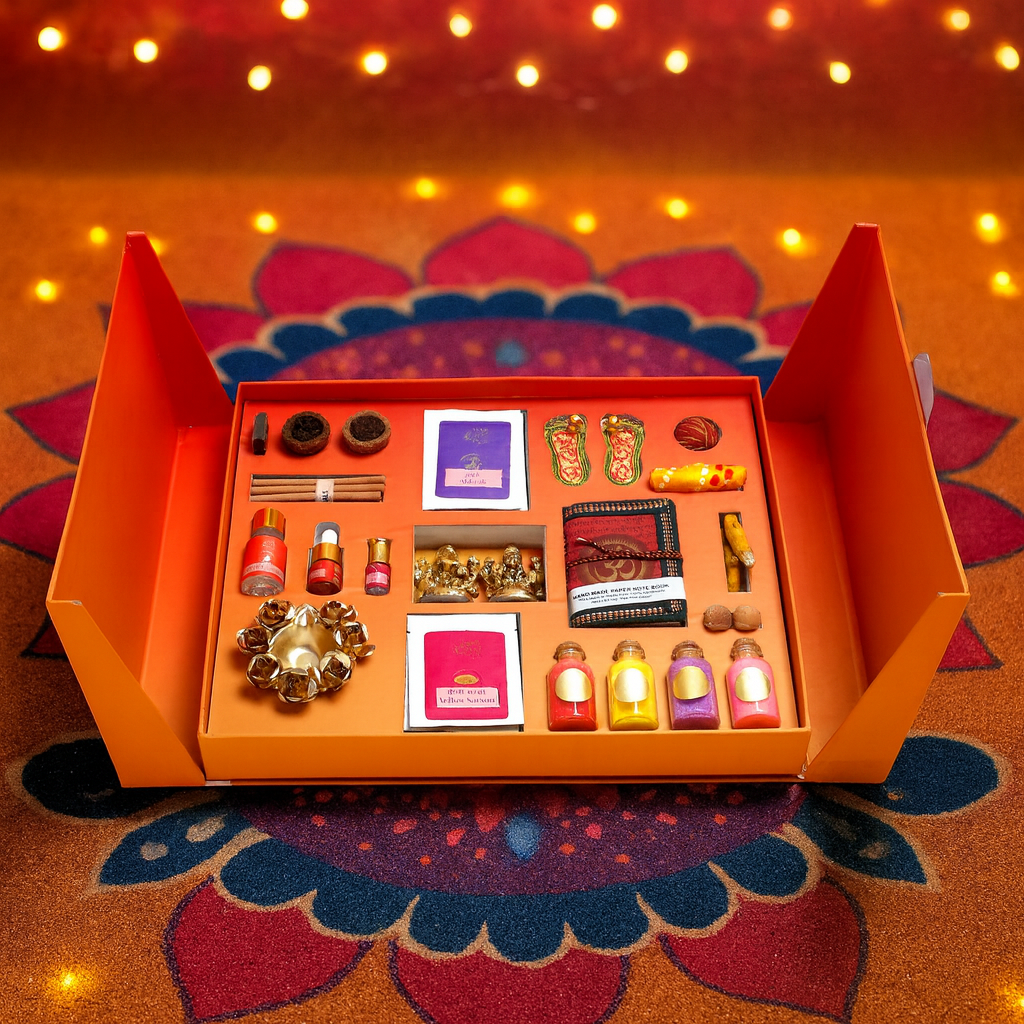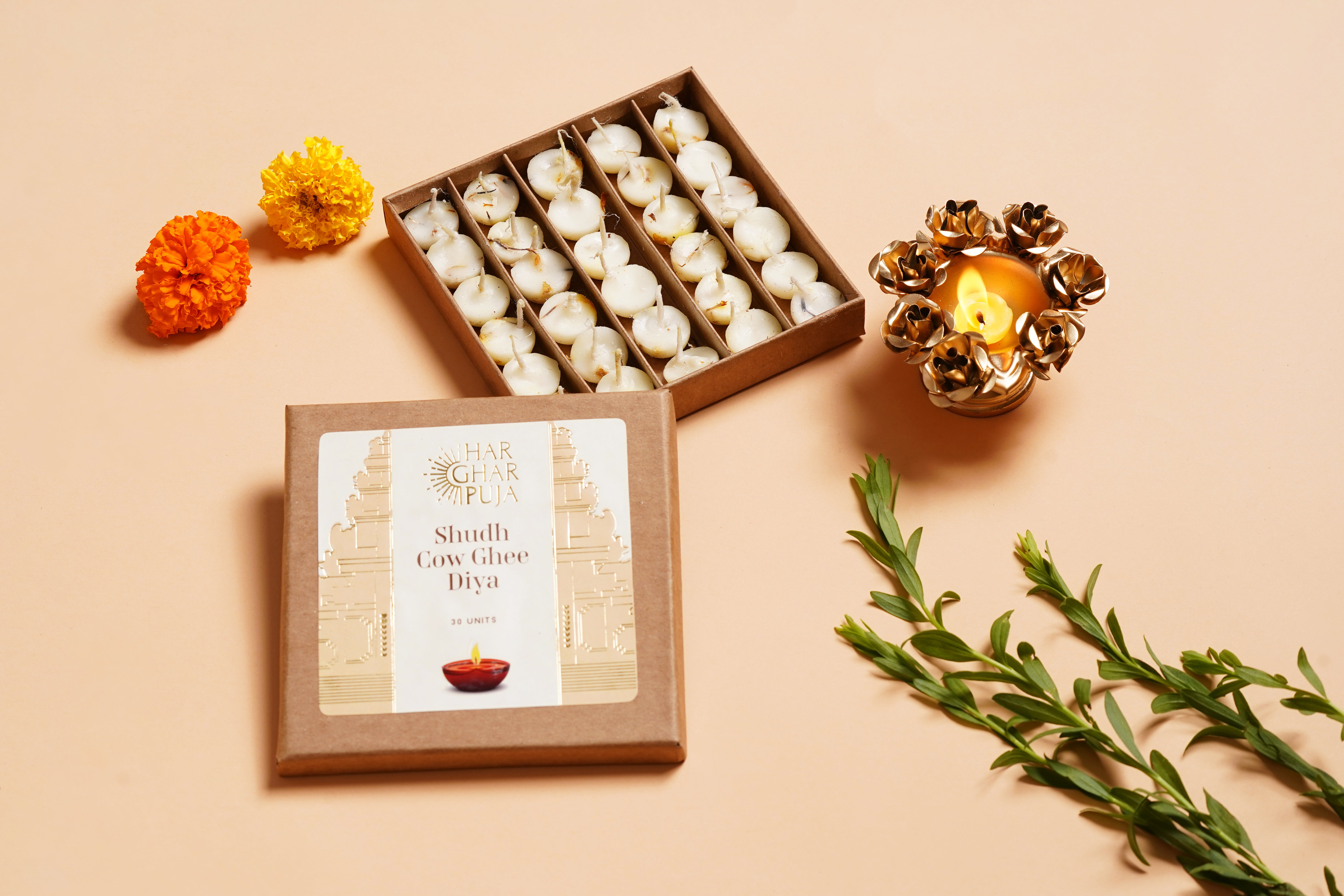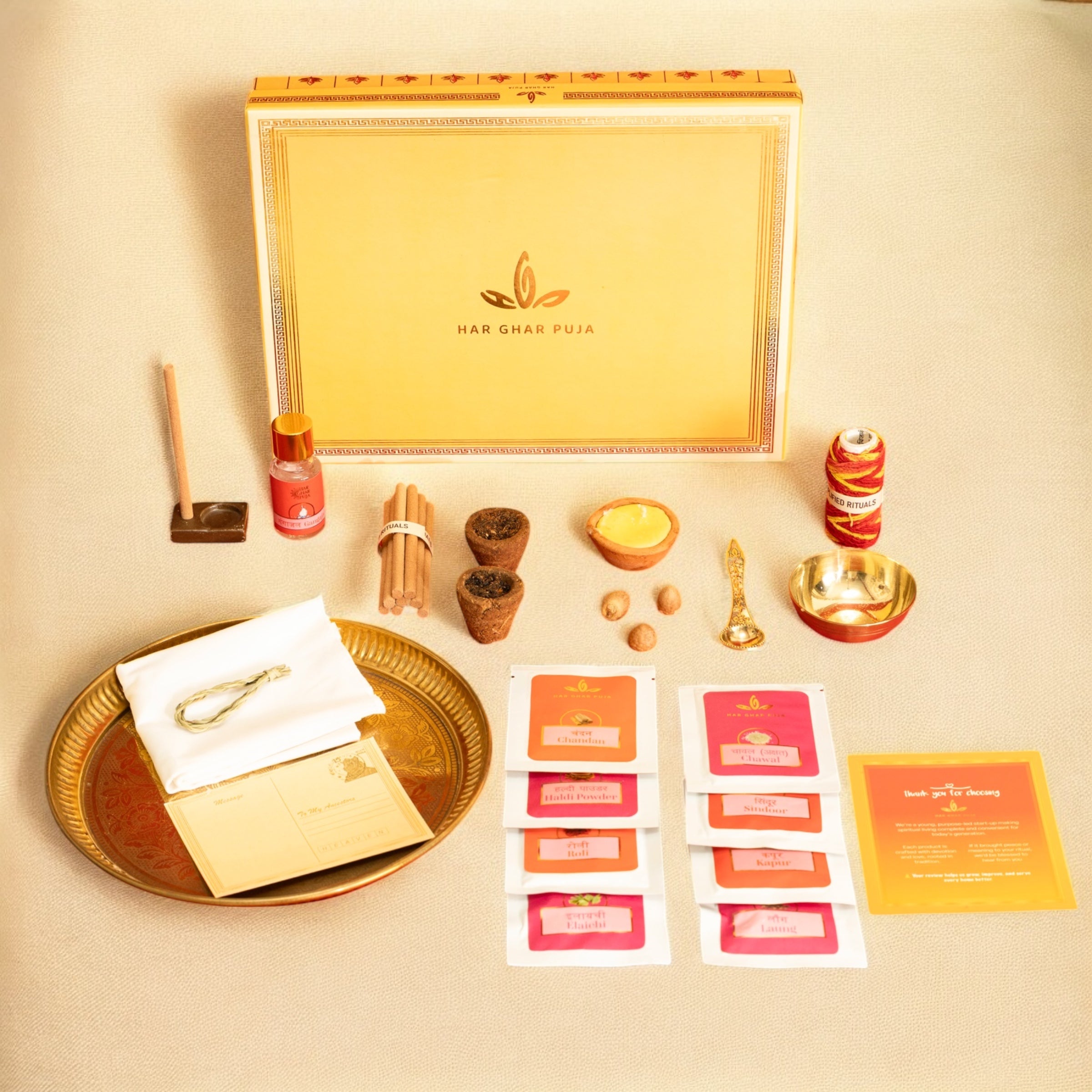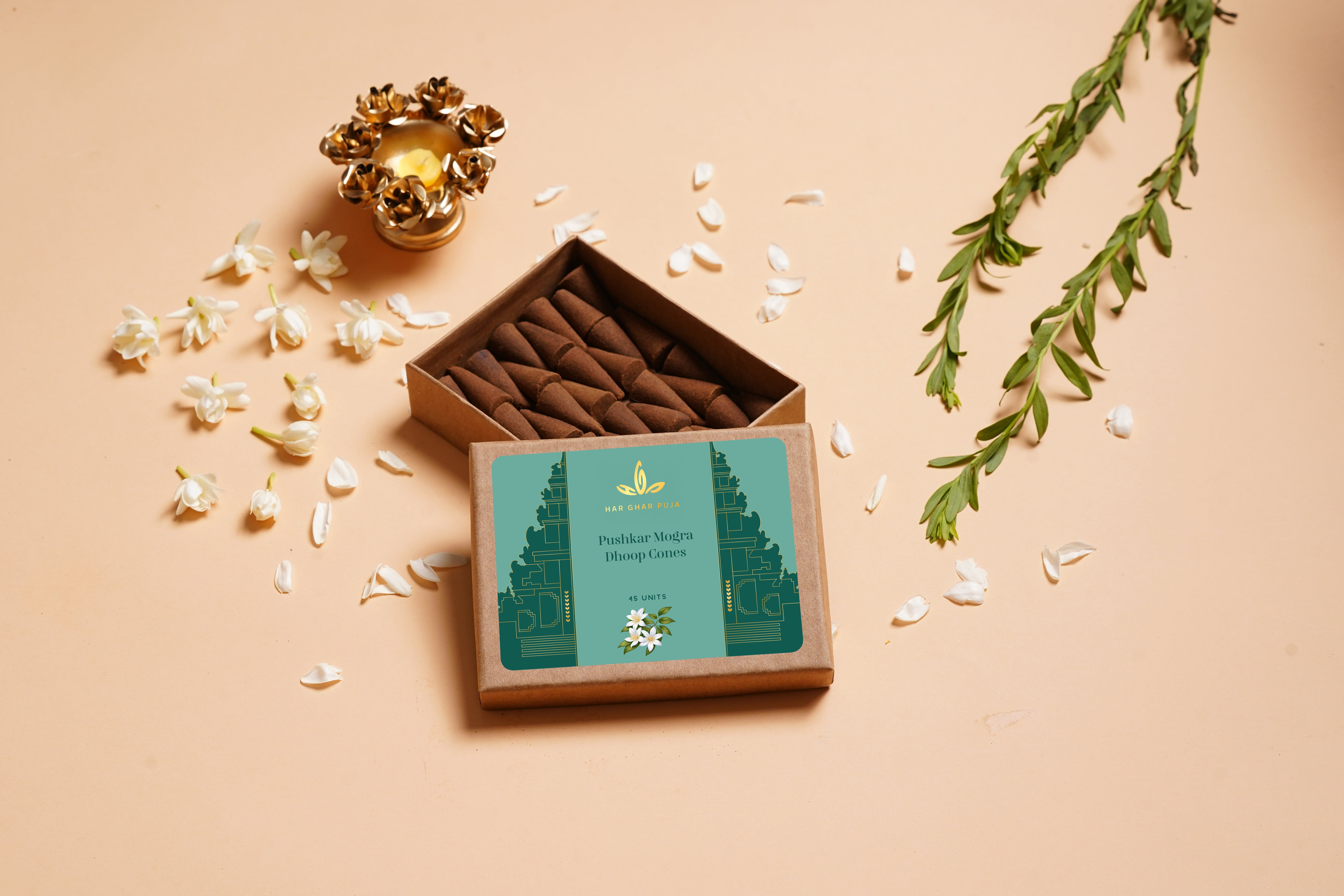Navratri is a significant festival dedicated to the worship of Goddess Durga and her nine divine forms. During these nine days, devotees perform special rituals and prayers, invoking the blessings of the Goddess for prosperity, health, and happiness. To perform Navratri Puja with devotion and precision, it is essential to have all the required items. Below is a detailed list of Pooja Samagri (ritual items) needed for conducting Navratri Puja.
Table of Contents
Essential Pooja Samagri for Navratri Pujan

- Kalash (Sacred Pot):
- A copper or brass pot (Kalash) is used for the Kalash Sthapana, symbolizing the presence of Goddess Durga.
- Water to fill the Kalash (preferably Ganga water or pure water).
- Mango leaves to place at the mouth of the Kalash.
- A coconut (brown and unpeeled) placed on top of the Kalash with red cloth and sacred thread.
- Devi Idol or Picture:
- A picture or idol of Goddess Durga, representing the deity being worshipped during Navratri.
- Chunri (Red Cloth):
- A red chunri or saree to offer to the Goddess.
- Often embellished with golden embroidery, it is used to drape the idol or place it in the puja area.
- Sindoor (Vermillion):
- Sindoor is offered to Goddess Durga as part of the daily rituals.
- Roli and Akshat (Rice and Red Powder):
- Roli (red kumkum) is applied as a tilak during the puja.
- Akshat (uncooked rice mixed with turmeric) is offered as a symbol of prosperity and peace.
- Moli (Sacred Thread):
- A red and yellow sacred thread (moli) is tied around the Kalash and is also worn by devotees on the wrist during the puja.
- Flowers and Garlands:
- Fresh flowers, especially red hibiscus or marigold, are offered to the deity. Garlands made of fresh flowers can be placed around the Goddess’s idol or picture.
- Fruits and Sweets:
- Fresh seasonal fruits like apples, bananas, and pomegranates are placed as offerings.
- Sweets such as laddoo, peda, or barfi are prepared for Prasad.
- Panchamrit:
- A mixture of milk, curd, ghee, honey, and sugar is prepared as Panchamrit for offering to the deity.
- Coconut and Betel Leaves:
- A coconut with betel leaves is considered a symbol of purity and is placed in front of the deity.
- Incense Sticks (Agarbatti) and Dhoop:
- Incense sticks and dhoop (fragrant smoke) are lit during the puja to purify the atmosphere and create a spiritual ambiance.
- Diya (Oil Lamp):
- An earthen or brass diya filled with ghee or oil is lit during the puja, symbolizing the light of knowledge and goodness.
- A special Akhand Jyoti (eternal flame) is often lit throughout the nine days of Navratri.
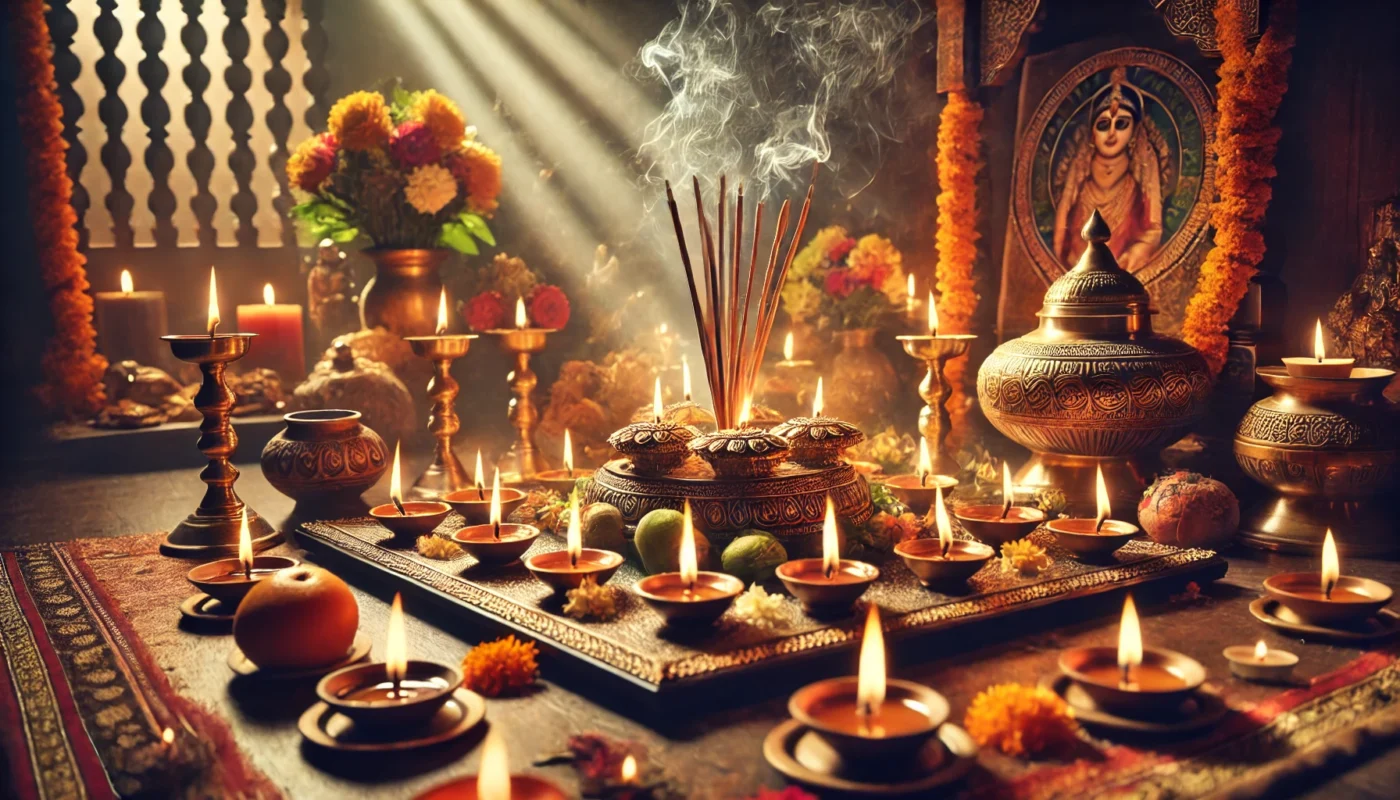
Some Other Items Are Also Required
- Camphor (Kapoor):
- Camphor is used to perform aarti and is believed to ward off negative energies.
- Gangajal (Holy Water):
- Holy water (preferably Ganga water) is used for sprinkling around the puja area and for Kalash Sthapana.
- Naivedya (Food Offering):
- Bhog (food offerings) like khichdi, puri, and halwa are offered to Goddess Durga, especially on Ashtami and Navami.
- Some devotees prepare kheer (sweet rice pudding) as a special offering.
- Cloth for Asana (Seat for Deity and Devotee):
- A clean red or yellow cloth is spread for placing the idol or picture of the Goddess.
- Another cloth is placed for the devotee to sit on during the puja.
- Bell (Ghanti):
- A small bell is rung during the puja to invite divine energies and signal the beginning of the ritual.
- Conch (Shankh):
- Blowing the conch at the start and end of the puja is considered auspicious, symbolizing the victory of good over evil.
- Kumkum and Haldi (Turmeric):
- Kumkum and turmeric are applied as tilak and offered to the deity as part of the daily worship.
- Havan Samagri:
- If a Havan (fire ritual) is to be performed, special havan samagri like ghee, wood, and various grains and herbs are required.
Special Items for Ashtami and Navami

- Kanya Puja Samagri:
- On Ashtami or Navami, Kanya Puja is performed by worshipping young girls who represent the nine forms of Goddess Durga. You will need:
- Kumkum and haldi for applying tilak to the girls.
- Red bangles and anklets as gifts for the girls.
- Special food like puri, chana, and halwa to serve to the girls.
- On Ashtami or Navami, Kanya Puja is performed by worshipping young girls who represent the nine forms of Goddess Durga. You will need:
- Sandhi Puja Samagri:
- For performing Sandhi Puja, which is done at the juncture of Ashtami and Navami, you may require:
- Lotus flowers for the special offering.
- Chalk or rice flour to draw the lotus or sacred symbols.
- For performing Sandhi Puja, which is done at the juncture of Ashtami and Navami, you may require:
The proper arrangement of Navratri Pooja Samagri ensures that the rituals are performed with devotion and precision. Each item used in the Navratri Puja holds a deep spiritual meaning and is essential for invoking the divine blessings of Goddess Durga. Whether you are performing the daily puja or the special rituals on Ashtami and Navami, having the complete pooja samagri ensures a smooth and fulfilling Navratri celebration.


